Canon EF 16-35 mm f/4L IS USM
8. Vignetting
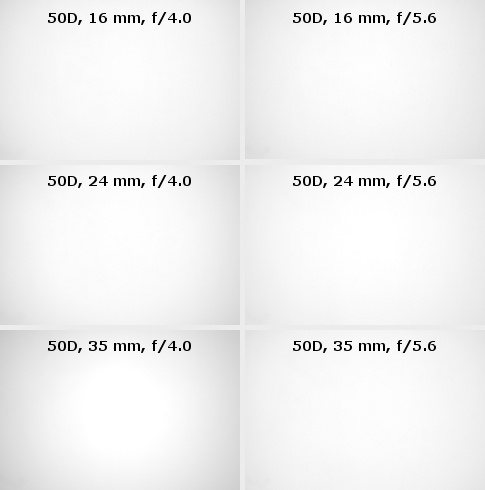
At the combination of 16 mm focal length and f/4.0 aperture the brightness loss in the frame corners amount to 14% (-0.42 EV). What’s interesting the correlation between that aberration and the aperture value is weak: by f/5.6 and higher the vignetting keeps a level of 13% (-0.40 EV). A very similar situation can be seen at 24 mm. In that case by f/4.0 the vignetting is 16% (-0.51 EV) and by f/5.6 and higher it reaches 11% (-0.34 EV).
Please Support UsIf you enjoy our reviews and articles, and you want us to continue our work please, support our website by donating through PayPal. The funds are going to be used for paying our editorial team, renting servers, and equipping our testing studio; only that way we will be able to continue providing you interesting content for free. |
- - - - - - - - - - - - - - - - - - - - - - - - - - - - - - - - - - - - - - - - - - - - - - - -
As we wrote earlier, most problems you encounter at 35 mm where, at the maximum relative aperture, you have to take into account 24% of the light fall-off (-0.78 EV) in the corners. The problem disappears, though, by f/5.6 and f/8.0 with the vignetting getting to 11% (−0.33 EV) and 9% (−0.28 EV) respectively.
Now let’s check the situation on a much more demanding full frame sensor.
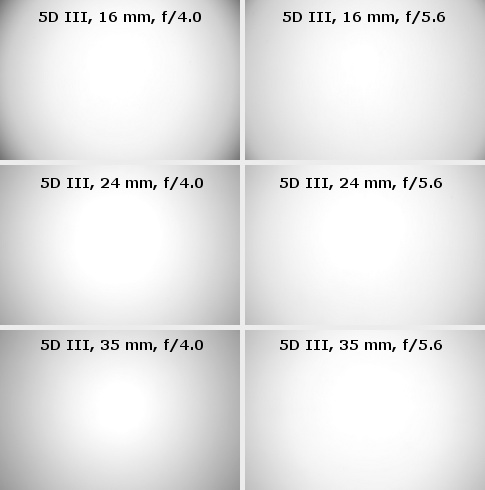
A difficult combination of an ultra-wide angle and the maximum relative aperture proved to be quite a challenge; in that case you have to consider a brightness loss amounting to as much as 53% (-2.17 EV). The situation improves by f/5.6 but still the vignetting is quite visible there, amounting to 36% (-1.31 EV). A moderate level of that aberration can be observed only by f/8 and f/11 where the vignetting is respectively 27% (−0.90 EV) and 25% (−0.85 EV).
Definitely less problems can be seen in the middle of the focal range. At the maximum relative aperture the vignetting reaches 34% (-1.22 EV), by f/5.6 its value decreases to 26% (-0.88 EV) and by f/8.0 it is 22% (-0.71 EV). Further stopping down doesn’t have any measurable influence on this aberration.
At the maximum focal length the vignetting increases again. By f/4.0 you have to deal with 41% (-1.52 EV) of brightness loss and by f/5.6 it drops to 25% (-0.84 EV). By f/8.0 and f/11 we got respectively 20% (−0.64 EV) and 16% (−0.52 EV).
In this category the Canon is worse than the Nikkor 16–35 mm f/4.0 VR whose maximum vignetting level was 41%. The Tokina AT-X PRO FX SD 17–35 mm f/4 (IF) fared better than the Canon as well but in its case the constructors’ task was a bit easier due to a slightly narrower angle of view.
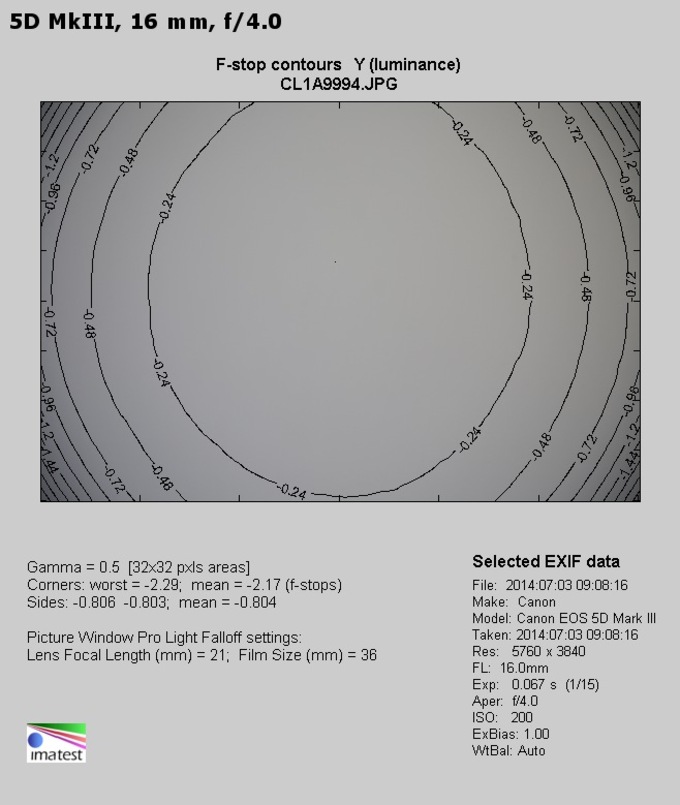 |
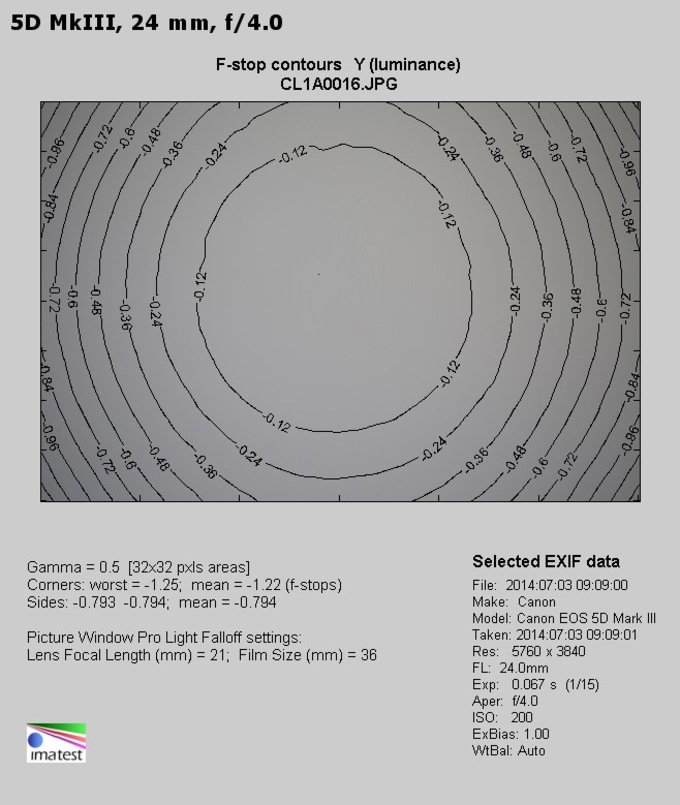 |
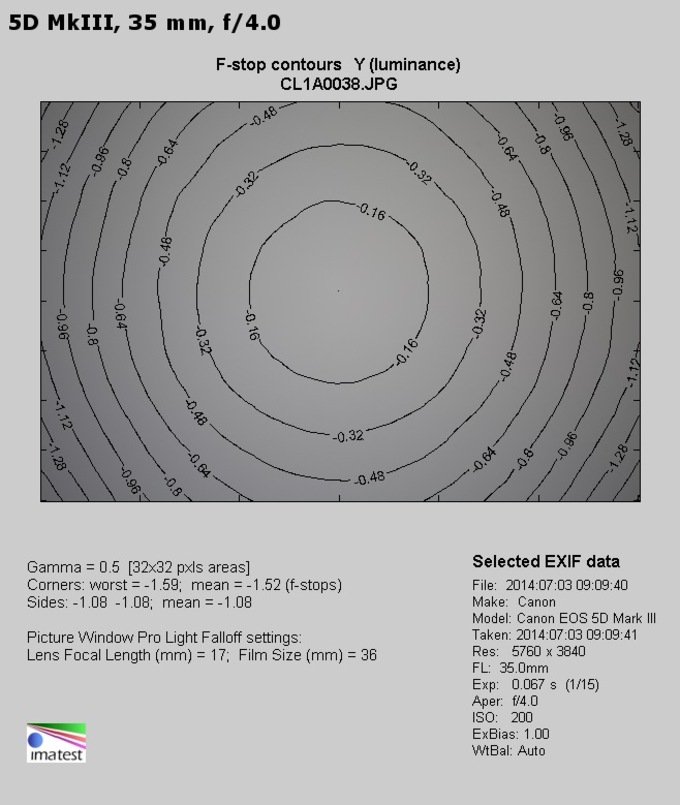 |






